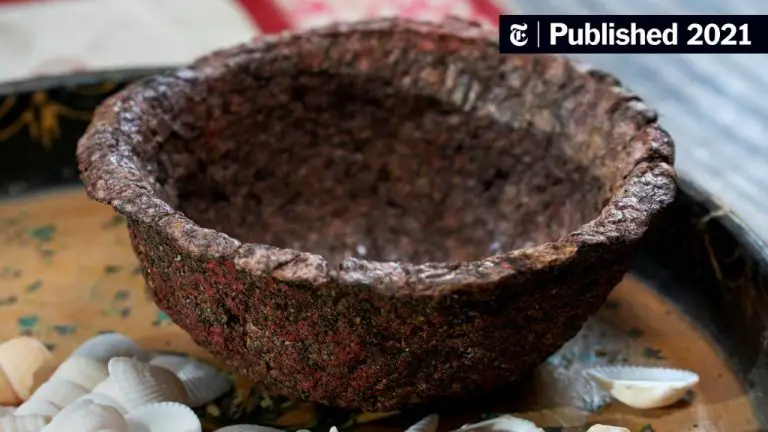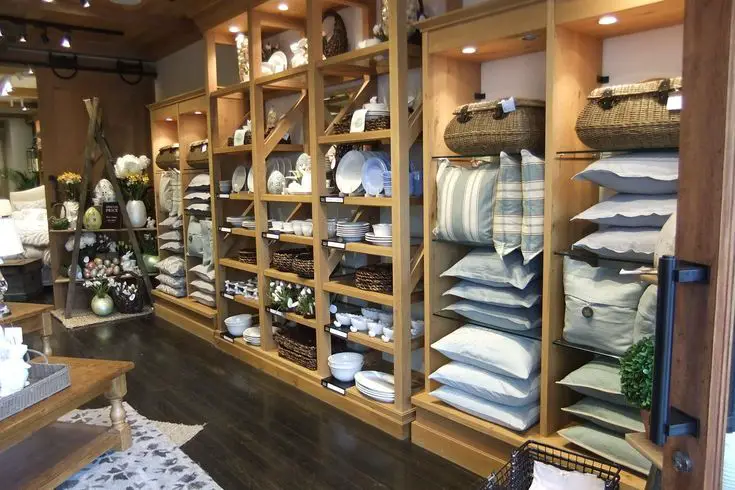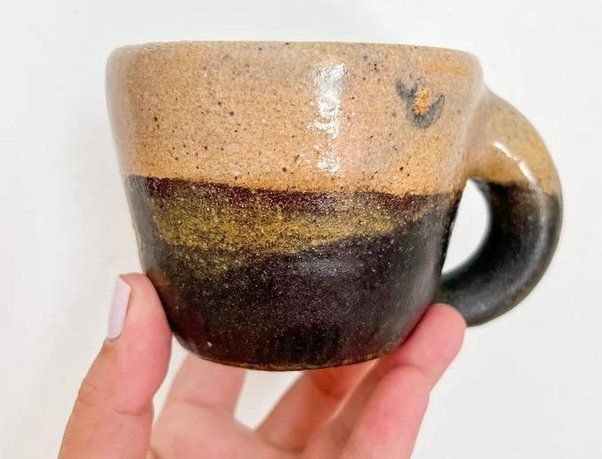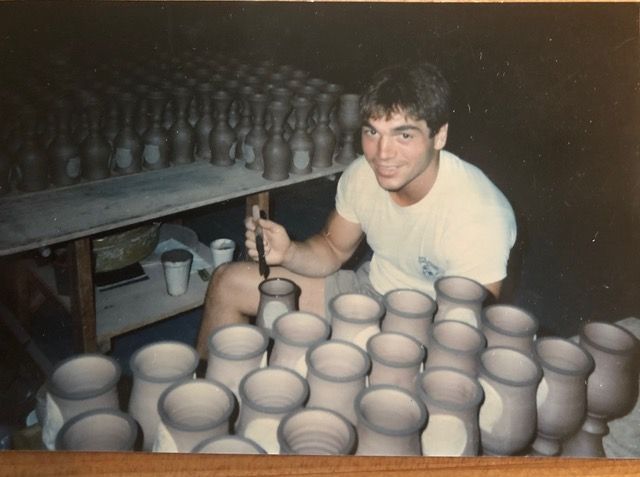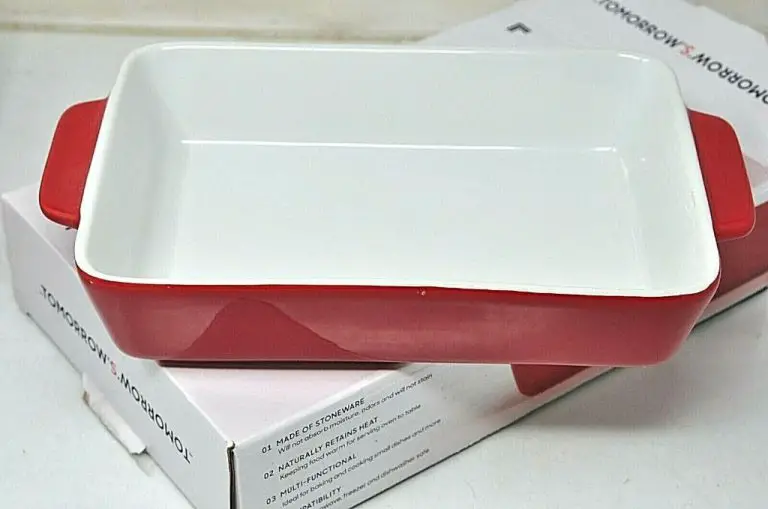What Size Stamp Is Best For Pottery?
Using stamps to decorate and personalize pottery has become a popular technique among ceramic artists and hobbyists. Stamps allow you to easily imprint designs, patterns, letters, and images onto clay surfaces. When choosing stamps for pottery, one of the biggest considerations is what size stamp to use. The right size stamp can help achieve a crisp, clear impression, while the wrong size may result in a distorted or unclear stamp. This guide will overview the factors to consider when selecting stamp sizes for clay projects and provide tips on how to get the best results when stamping pottery.
Small, medium, and large stamps each have their ideal uses on pottery depending on the clay thickness, desired details, and stamp placement. Understanding when to use certain sizes will ensure your stamps make a lasting impression on every piece. With the right approach, clay stamps can beautifully enhance mugs, plates, bowls, tiles, jewelry, and any ceramic creations.
Stamp Size Considerations
When choosing a stamp size for pottery, there are two main options – small stamps or large stamps. Generally, small stamps range from 10-25mm in diameter, while large stamps are usually over 25mm, commonly 2-3 inches.
Smaller stamps, around 1/2 inch or 20mm, are great for stamping details on small pieces, according to redditor in this r/Pottery thread. Small stamps allow you to capture intricate designs and maintain legibility on tiny surfaces. However, if the stamp is too small, under 10mm, you may lose clarity in the stamped image.
For stamping mugs, vases, and larger items, stamps over 1.5 inches or 40mm are commonly used according to 4Clay. Large stamps 2-3 inches in diameter make bolder impressions that stand out on big surfaces. But extremely large stamps over 3 inches can be difficult to evenly apply pressure to when stamping curved surfaces.
So in summary, small 10-25mm stamps are best for detail work on small pieces, while large 25-75mm stamps stand out on big surfaces. Consider the size of the surface you’ll be stamping when selecting stamp sizes.
Best Uses for Small Stamps
Small stamps, generally 3/4 inch or less, are ideal for adding fine details and small accents to pottery pieces. The main advantages of small stamps are:
- Ability to stamp small or narrow surfaces – Small stamps can fit into tight spaces like the bottom of mugs, inside bowls, or on thin handles that larger stamps can’t access.
- Precision and intricacy – The compact size allows you to stamp very precise, intricate patterns not achievable with big stamps. Small stamps are great for adding borders, repetitive patterns, polka dots, or dainty accents.
- Subtlety – Small stamps make subtler impressions that stand out less and blend into the overall design. You can use them to stamp initials, dates, or monograms without dominating the look.
- Variety – Using a mix of small and large stamps creates visual interest with variations in scale and contrast.
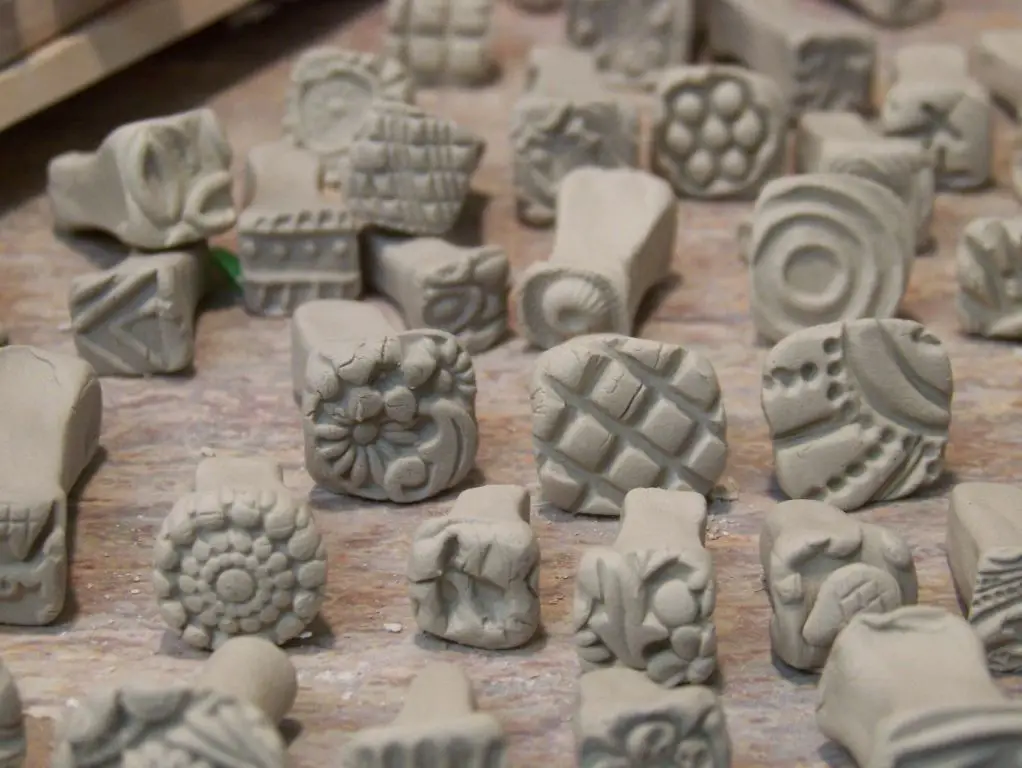
The downside is small stamps cover less area per impression. But their finesse makes up for their lack of bold impact. Choose high quality, deeply etched small stamps with crisp edges from reputable suppliers like Examples of stamps for clay for best stamping definition.
Best Uses for Large Stamps
Large stamps, generally 1 inch or more in diameter, are ideal for making bold, dramatic patterns on pottery surfaces. The larger surface area allows for intricate designs and visual impact. According to Examples of stamps for clay, marker’s marks, chop …, some great uses for large stamps include:
- Large overall surface patterns – Large stamps can quickly cover a big area with an allover design.
- Repeating patterns – Use a large stamp repeatedly to create a pattern that flows across the surface.
- Focal point motifs – A single large stamped image can be the dramatic focus of your piece.
- Borders and frames – Use large stamps to create graphical borders along edges or frames around central imagery.
- Textures – The large surface area captures more detail, making large stamps ideal for realistic wood, stone, leaf, or other textures.
The expansive patterning possibilities of big stamps make them a versatile option for potters. Pay attention to stamp placement and spacing to ensure the designs are evenly aligned and properly balanced across curved surfaces. Large stamps with deep impressions may also require extra clay support underneath during stamping, according to tips on Ceramic Arts Daily.
Tips for Stamping
When stamping pottery, it’s important to use consistent pressure and vary your stamping angle for the best results. According to How To Stamp Clay, you’ll want to avoid coming straight down on the clay and applying even pressure across the stamp. Instead, try stamping at a slight angle and rolling the pressure around the stamp.
As 4Clay recommends, spray the stamp surface before each use to prevent sticking and allow for cleaner imprints. Re-coat as needed while working. Using a spray oil makes it easier to get crisp, detailed impressions from your stamps.
Experiment with different angles – 45 degrees, 60 degrees, 90 degrees – to get variation in your stamped designs. Layering stamps at different pressures and angles creates visual interest. When using custom stamps with letters or designs, rotating the stamp orientation can also make patterns more distinctive.
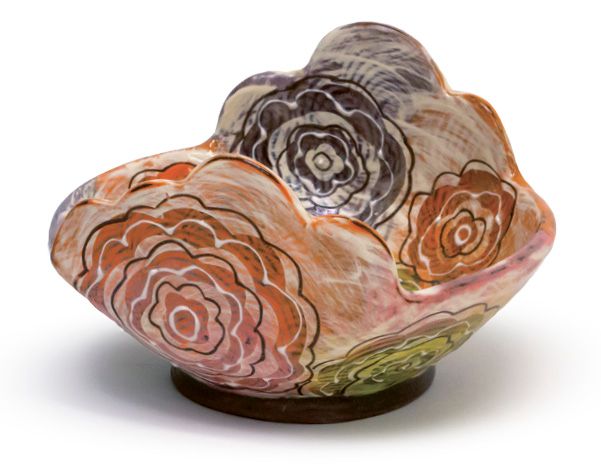
Choosing Stamp Designs
When selecting stamp designs for pottery, three popular options are geometric patterns, nature motifs, and text. Geometric shapes like circles, squares, triangles, diamonds, and lines can create interesting abstract designs. According to this Pinterest board, geometric stamps are commonly used to make borders or all-over patterns on pottery pieces.
Nature motifs like leaves, flowers, trees, animals, and landscapes are another stamp design choice for potters. Using nature-inspired stamps can add an organic, earthy look to pottery. Text stamps with letters, numbers, or words allow you to emboss names, dates, inspirational quotes, or other messages onto clay. When choosing stamp designs, potters should consider the style and purpose of the pottery piece.
Making Custom Stamps
Making your own custom stamps can be a fun and rewarding process. With some simple materials and techniques, you can create stamps with your own designs to give your pottery a unique personalized touch. There are a few key things to consider when embarking on making custom stamps.
Materials
For the stamp base, polymer clay works very well. Polymer clay is easy to work with, holds fine detail for carving, and can be baked to cure and harden the clay. Smooth bark-free basswood or acrylic blocks also make good stamp bases. For carving tools, you’ll want a set of basic clay carving tools like loops, needles, and different shaped tips. Cutting tools like an X-acto knife can help too. You’ll also need a brayer or roller to apply ink.
Carving Techniques
Start with your design sketched out. Impress your main outlines first, then work from thick lines to thinner detail. Move from background to foreground. Cut away negative space around images. Use loops and needles to define details. Go slowly and carefully to avoid over-cutting. Bake the polymer clay according to package directions to harden it before stamping. Check for any flaws and use an emery board if needed to smooth the stamp surface. Avoid over-baking as too much heat can warp the clay. Test your finished stamp and re-work any problem areas. Store stamps safely wrapped when not in use.
With some patience and practice, you can create stamps with intricate designs perfect for decorating your pottery. Refer to this guide for more detailed tips on successfully making custom pottery stamps.
Caring for Stamps
Properly caring for your stamps will help them last longer and perform better.
Cleaning
It’s important to regularly clean your stamps, especially after each use, to prevent a buildup of dried clay that can affect the stamp quality. Use a soft brush and cold water to gently scrub away any clay residue. Avoid using hot water as this can damage many stamp materials like rubber. For tough dried clay, let the stamp soak briefly in water before scrubbing. Be extra gentle when cleaning more delicate materials like wood and avoid soaking these stamps in water when possible. According to “How to use and care for the Custom Pottery Stamp,” give brass stamps a quick wash to prevent residue buildup. Pat your stamps completely dry before storing.
Source: https://stampsworkshop.com/en-ca/blogs/articles/how-to-use-and-care-for-the-custom-pottery-stamp
Storage
After cleaning, store stamps in a dry, protected area to prevent damage. Avoid exposing stamps to moisture or humidity which can cause mold, warp wood stamps, or degrade materials over time. Store mounted stamps with the mounts facing up to keep the stamp surface from being damaged. For loose stamps, consider using storage containers to keep them organized and protected.
According to “Magical Pottery Stamp Cleaning!,” ensure stamps are completely dry before storing to prevent issues like mold growth.
Source: https://stampty.co/blogs/news/potter-stamp-cleaning
Troubleshooting Stamping Issues
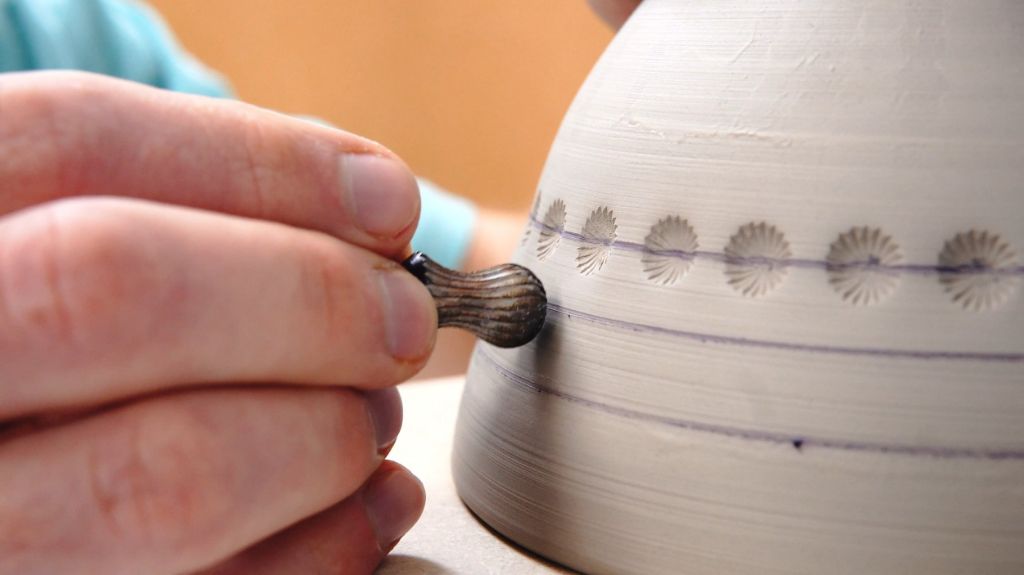
If you are experiencing fading or blurred images when stamping your pottery, there are a few things you can try to troubleshoot the issue:
Make sure your clay is the right consistency. Clay that is too wet or too dry can lead to poor stamp impressions. The clay should be leather hard for the best stamping results (Source: https://www.reddit.com/r/Pottery/comments/n2zght/any_tips_on_stamping_your_potters_mark/).
Use a stamp support tool. These are small, handheld devices that go behind the area you are stamping to provide even pressure and support. This prevents deformation of soft clay that can lead to blurred images (Source: https://www.youtube.com/watch?v=HWejOP1RenA).
Make sure your stamps are clean. Clay residue left on the stamp can fill in the fine details and lead to poor impressions. Keep your stamps clean in between uses for best results.
Consider making a custom stamp. Prefabricated stamps may not apply enough pressure for detailed imprints. Having a custom stamp made from an unbending material can create crisp, clear imprints (Source: https://www.reddit.com/r/Pottery/comments/n2zght/any_tips_on_stamping_your_potters_mark/).
Conclusion
Choosing the right size stamp is important for getting the best results on your pottery pieces. Smaller stamps are great for details and borders, while larger stamps make bold impressions. The size you choose will depend on your specific project and aesthetic goals.
In summary, opt for small stamps around 1” or less when you want delicate impressions and crisp lines. Medium stamps 1”-2” are versatile for most projects. Larger 2”+ stamps create eye-catching focal points. Mix stamp sizes to create contrast and visual interest.
Test out a range of stamp sizes on sample pieces to see what works best for your pottery. Consider the shape and intricate versus simple design. Play around with stamp placement and using stamps in combinations until you find your desired look. With the right stamps and techniques, you can create beautiful stamped pottery.
Finally, take care of your stamps so they last. Clean them regularly and store properly between uses. With quality stamps in an assortment of sizes, you’ll be able to achieve endless custom looks on your pottery.

